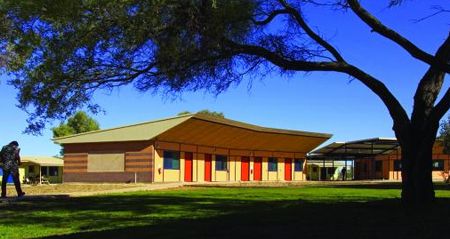Taxpayer funded NGO spends big on financial services
19 February 2016
 COMMENT by ERWIN CHLANDA
COMMENT by ERWIN CHLANDA
It’s a medium size business in Alice Springs, with a turn-over of around $5m, still in the mum & dad range, with a couple of dozen employees (total costs for them of around $3m), and a mission that’s not exactly a brain snapper: Mostly accommodation and meals.
What would be you best guess of its spend on financial services?
Well, you may say, mum’s got a good handle on MYOB, she does the books and hands over the computer files, with full documentation, to an accountant at the end of the year, and he or she does the balance sheet and tax return. Let’s say, a couple of thousand dollars a year?
It’s a different story altogether for the taxpayer funded NGO, the Central Australian Aboriginal Alcohol Programmes Unit, which is now – surprise, surprise – in the hands of an administrator.
It spent in 2014/15 (with the 2013/14 figures in brackets):–
• For accounting $164,695 ($227,428).
• For book keeping $74,232 ($102,933).
• For the auditor’s remuneration $37,475 ($22,483).
• Computer expenses $96,416 ($92,601).
• Then there are program expenses, whatever that is, of $145,310 ($163,756) and equally obscure, $31,100 ($134,160) for “contracting”. The contractors got more than four times as much in 2013/14 than they did last year.
And then just to make sure everything’s honkey dory there were apparently lots of meetings costing $65,587 ($78,655).
So, between friends, CAAAPU spent more than $300,000, just to do the books.
These figures are readily available on the website of the Office of the Registrar of Indigenous Corporations (ORIC) – and so are the figures of dozens of other Indigenous organisations.
Are there more of them spending such exorbitant amounts on basic, simple financial management?
Who gets the money? A prominent local firm prepared the books we are quoting from (we’ve asked that firm to comment).
And why do we, the public, not raise an eyebrow unless an organisation collapses and an administrator needs to be appointed?
There’s a PHD in that!



So who is the bookkeeper? And who is the accountant?
And why do they have to pay an external party to do that much bookkeeping and accounting?
Maybe some questions have to be asked.
There is a difference between administration under the corporations act and special administration under the corporations (Indigenous) act. In the case of an Aboriginal corporation failing a regular review or by complaint the office of the Registrar for Indigenous Corporations will place them under special administration before they collapse.
If you read CAAAPU financial statements prior to entering administration there aren’t strong indications of a problem. A more detailed review by the Commonwealth into internal processes and governance would have revealed something which required fixing.
This is exactly what you are calling for in your second to last paragraph. The system worked.
Recently the Giles Government refused to fund an Aboriginal housing organisation that was not performing well.
There was an outcry but good on them for doing that.
The truth is that many Aboriginal organisations are grossly inefficient and self serving so that decision was a wake up call.
CAAAPU could probably be run for half its current funding.
Does Congress really need $40 million a year?
An industry alternative that wasn’t race based could run it for $20 million.
Those savings could be put into areas of high need in the community.
Concentrated effort shifts project goals.
Earlier goals simple to assist some drunks detox.
Racial taggers claim need to provide “culturally appropriate” color-coded Alcoholics Anonymous service.
Politicians help shift a few fences claiming essential to be “culturally appropriate” so drunks remain happy.
Soon enough goals shift towards dancing the money-tree dance.